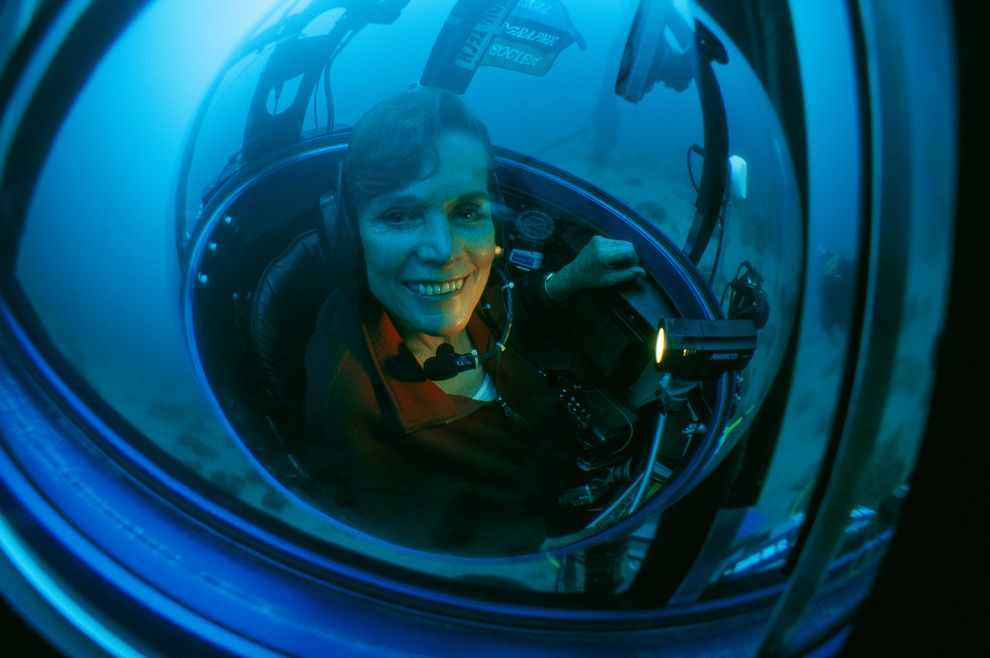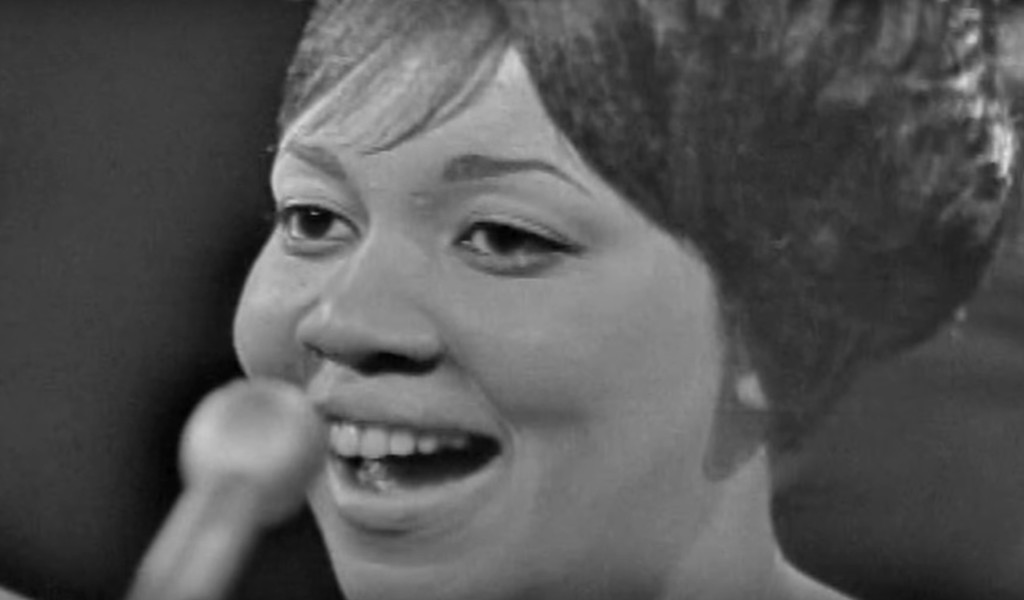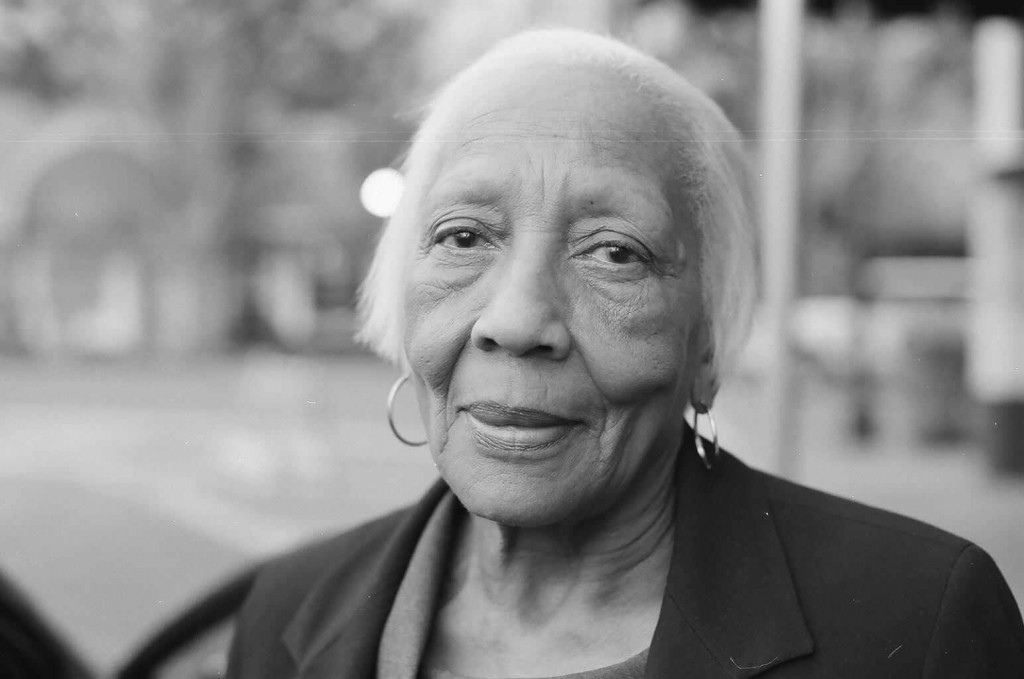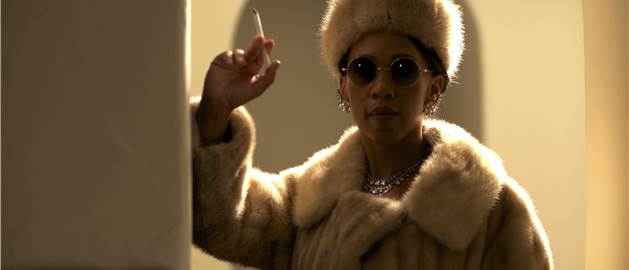This (slightly edited) repost by staff writer Ren Jender appears as part of our theme week on Women Scientists.
When characters on TV shows or in feature films encounter “a scientist,” that person is usually a man. The rare times when actresses play scientists in mainstream films (besides the obvious recent example of Ghostbusters) they’re more likely to be a punchline than a real character, like Denise Richards in the James Bond film The World Is Not Enough. Audiences have to look to documentaries like Particle Fever, about the discovery of the Higgs boson, to see women scientists in prominent roles on film. The Netflix documentary Mission Blue focuses on one woman scientist, Sylvia Earle, a former chief at the National Oceanic and Atmospheric Administration (NOAA) and pioneering oceanographer and marine biologist who is on a quest to save the world’s oceans from dying.
If that last sentence seems like an exaggeration, you should probably see this film. Earle, (now 80, but 79 when the film was released nearly two years ago) has been scuba diving as part of her research for the past 60 years (where she got her undergrad degree was one of the first places to adopt this “new” technology) and has seen firsthand the destruction that pollution and overfishing have wrought — even in areas “in the middle of nowhere” we (and she) think might be unaffected. She points out plastic bags and bottles she encounters on the ocean floor along with long stretches of dead coral and hardly any fish in places where both previously flourished.
She asks, “How can we use the ocean and not use it up?” She’s not afraid to take on the fishing industry, describing her stint at NOAA: “I went to one meeting of the fisheries council. And I was never allowed to go again.” When she warned of the (still) impending extermination of bluefin tuna (because of overfishing) she earned the nickname, “The Sturgeon General.” She resigned from her government position so she could further ocean conservation without being tethered by politics.
The film isn’t all doom and gloom. We also see, in some stunning underwater cinematography (both reminiscent of the Jacques Cousteau documentaries and surpassing them) places where ocean life is plentiful: huge schools of fish that seem like shimmering silver walls along with harmless whale sharks and sea turtles touchingly unwary of divers. Earle is a great advocate of everyone exploring the ocean in this way, theorizing that people care more about wildlife and its environment if they can see it: if wildflowers, birds, trees and deer were hidden away from us we might not have many protections for them either. Earle points out that even though she’s not “big and muscly,” she’s been diving her entire adult life and was able to convince her own mother, at 81, to give it a try. She loved it.
The film shows us the deep sea animals that Earle first encountered over 30 years ago in a special atmospheric diving suit she, along with her third husband, helped design. The natural flashing luminescence of fish and other sea creature at these depths look like city neon signs and gaudy Christmas displays all at once.
We also hear of Earle’s own journey first as a child allowed to explore, alone and for hours at a time, the wild places around her home (as few children now get the chance to do) and later her career as a scientist. She is careful to include herself when she says repeatedly that no one foresaw the depletion of a resource — the ocean and its inhabitants — that seemed too vast for human beings to impact. But now Earle says, “No ocean, no life. No ocean, no us.”
Earle became a scientist before second-wave feminism, when hardly any women entered that profession and we see in the media coverage of her accomplishments (when she was often the first or only woman but usually called a “girl”), the sexism of the era, which she undoubtedly encountered on the job as well. But the film’s co-director and interviewer Fisher Stevens (yes, the same one who acted in films like Short Circuit — but more recently was a producer for The Cove) doesn’t ask about these instances, only gushes about how “beautiful” she was. Earle is polite to him, but, at 79, she might be wondering when she will finally be excused from the unofficial beauty pageant all women are subjected to.
This film could use more women. We barely see Earle interacting with other women scientists or divers in Blue (except very briefly in Australia and in vintage footage of her time as part of an all-woman team of researchers) though many more women are in the field now than when she started her career. Not enough women are behind the scenes either: the film was directed and written by men. When we consider Earle is not just a scientific pioneer, but also writes books about ocean conservation for the general public (including one released to coincide with this documentary — as well as children’s books) and is an effective enough speaker for lay audiences that she won a substantial monetary award as part of TED Talks, the omission of her from the film’s writing team is baffling. If her own writing had been included, some elements, like a casual mention of the acidification of the ocean (thanks to carbon dioxide emissions) might have been better explained.
I also would have appreciated more of Earle’s take on her personal life. She was married three times and had three children (with the addition, for about a decade, of stepchildren too) but as her daughter (who now runs the deep sea equipment company Earle founded) tells us she “wasn’t June Cleaver.” Earle was taking part in underwater expeditions halfway across the world from her family at a time when wives and mothers were expected to make their homes and their husbands (and their husbands’ careers) their first priority. Her marriages suffered because of her absences, even though each of the husbands shared her interests. In this era of Lean In and “having it all,” I’m sure I’m not the only one who would like to hear in more detail about the experience of someone who attempted this balancing act before most of the so-called “experts” were born.
When we see the “Happiness is being in over your head.” sticker (illustrated with a scuba diver) in her office we think Earle may be a lot more interesting than the documentary makes her (an impression that Earle in interviews seems to confirm), but she’s still able to get in some good, informative quotes like, “What we’re doing to the ocean, what we’re doing to the planet as a whole comes back to us in bigger storms, more powerful storms, more frequent storms.”
A better film might have tied in Earle’s past status as an outsider (when she was one of the few women in her field) and rebel (in not conforming to the ’50s and ’60s cultural expectations of what a wife and mother should be) to her current role as an environmentalist. When we see (in graphic footage) gleeful fisherman cutting the fins off living sharks and then dumping their mutilated bodies into the ocean to die, we can’t help thinking that this boys’ club gives its members permission to behave badly — as most boys’ clubs do. Because she’s never been one of the boys, Earle can see their cruelty — and its consequences — more clearly: she even films a fishing boat “vacuuming” up its catch — from the vantage point of the fish.
In spite of its flaws, Blue is well worth seeing — and succeeded in making me want to try scuba diving. Some of the shots in the film seem more magical than the brightly colored, hologram illustrations in my childhood copy of The Little Mermaid. As Stevens accompanies Earle through storybook seascapes I thought, “This is the ‘beauty’ he should be gushing over.”
[youtube_sc url=”https://www.youtube.com/watch?v=B1wp2MQCsfQ”]
Ren Jender is a queer writer-performer/producer putting a film together. Her writing. besides appearing on Bitch Flicks, has also been published in The Toast, RH Reality Check, xoJane and the Feminist Wire. You can follow her on Twitter @renjender.
















